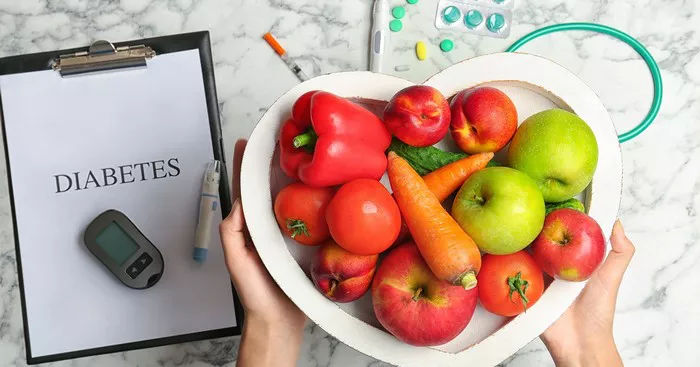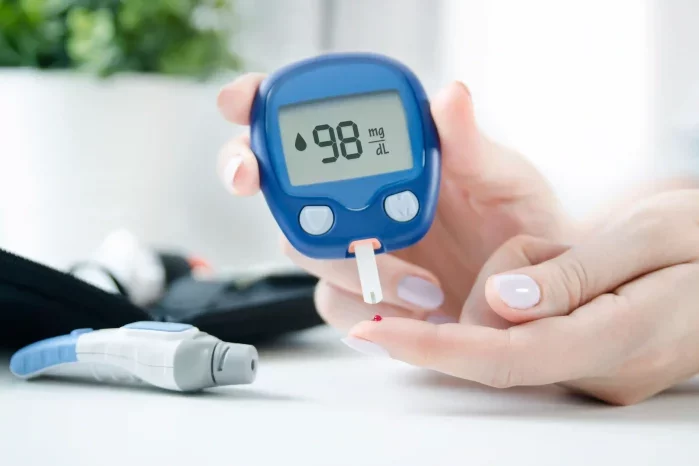Diet-controlled diabetes refers to a form of diabetes in which the individual’s blood sugar levels are primarily regulated through dietary adjustments, rather than reliance on medications or insulin injections. This approach to managing diabetes is especially important for individuals with prediabetes or those diagnosed with type 2 diabetes in the early stages. Through strategic changes in diet, people can significantly improve their blood glucose control, thus reducing the need for pharmacological interventions and potentially reversing the condition.
What is Diet-Controlled Diabetes?
Diet-controlled diabetes is a condition in which a person manages their blood glucose levels predominantly through careful dietary planning. For those who have type 2 diabetes or are prediabetic, a well-balanced and consistent diet can be a powerful tool in keeping blood sugar levels within the target range.
In this approach, the focus is on consuming foods that have a minimal effect on blood sugar spikes while emphasizing whole, nutrient-dense options. The strategy can also include weight management, as excess weight is a known risk factor for the development and progression of type 2 diabetes. The aim is to help individuals maintain a healthy weight, stabilize blood sugar levels, and reduce the risk of developing diabetes-related complications, such as cardiovascular disease and neuropathy.
Types of Diabetes and Their Relation to Diet
There are several types of diabetes, and each type can have different dietary management approaches:
Type 1 Diabetes: An autoimmune condition where the pancreas no longer produces insulin, requiring lifelong insulin therapy. While diet is important, it primarily complements insulin therapy, and diet alone cannot manage the disease.
Type 2 Diabetes: Characterized by insulin resistance, where the body either doesn’t produce enough insulin or cannot use it effectively. This is the most common form of diabetes and is highly responsive to dietary interventions, especially in its early stages.
Gestational Diabetes: Diabetes that develops during pregnancy. It can often be managed with diet, though some women may need insulin if lifestyle changes aren’t sufficient.
Prediabetes: A condition where blood sugar levels are elevated but not yet high enough to be classified as diabetes. Through dietary adjustments and lifestyle changes, prediabetes can often be reversed or prevented from progressing to full-blown type 2 diabetes.
The Role of Diet in Managing Type 2 Diabetes
For individuals with type 2 diabetes, diet plays a pivotal role in controlling blood sugar. In fact, research has shown that changes in eating habits can result in the reduction or even elimination of the need for medications in some cases. Here’s how diet works in managing type 2 diabetes:
Regulation of Carbohydrate Intake: One of the primary factors in blood sugar levels is carbohydrate consumption. Carbohydrates are broken down into glucose, which directly affects blood sugar levels. By controlling the amount, type, and timing of carbohydrate intake, individuals with diabetes can better manage their blood sugar levels. Foods that are high in fiber, such as whole grains, fruits, and vegetables, are particularly beneficial, as they cause a slower and more controlled increase in blood sugar.
Glycemic Index (GI): The glycemic index measures how quickly carbohydrate-containing foods raise blood glucose levels. Foods with a high GI, such as white bread and sugary snacks, cause rapid spikes in blood sugar, while low-GI foods, such as legumes and most vegetables, have a gentler effect. Individuals with diet-controlled diabetes are often encouraged to focus on low-GI foods to minimize fluctuations in blood glucose.
Balanced Macronutrient Distribution: A well-balanced diet that includes healthy fats, lean proteins, and complex carbohydrates is essential. Healthy fats from sources like avocados, nuts, and olive oil help improve insulin sensitivity and prevent heart disease, a common complication of diabetes. Lean proteins from fish, chicken, and plant-based sources like legumes also aid in blood sugar control while supporting muscle mass and metabolism.
Portion Control and Consistent Meal Timing: Eating consistent, balanced meals throughout the day helps avoid large fluctuations in blood glucose levels. Portion control is crucial to avoid overeating, which can lead to weight gain and worsen insulin resistance. Smaller, more frequent meals are often recommended over large, infrequent meals.
Weight Management: For individuals with type 2 diabetes, excess weight is often associated with increased insulin resistance. By achieving and maintaining a healthy weight through dietary changes, individuals can improve insulin sensitivity and reduce the need for medication. Even modest weight loss, such as 5-10% of body weight, can lead to significant improvements in blood sugar control.
Foods to Embrace for Diet-Controlled Diabetes
In managing diabetes through diet, certain foods are more beneficial than others in stabilizing blood glucose levels. These foods include:
Whole Grains: Foods like brown rice, oats, quinoa, and barley are high in fiber, which slows the absorption of sugars and helps keep blood sugar levels stable.
Leafy Greens and Non-Starchy Vegetables: Vegetables such as spinach, kale, broccoli, and bell peppers are low in calories and carbohydrates but high in vitamins, minerals, and fiber. They are excellent choices for controlling blood sugar.
Lean Proteins: Skinless poultry, fish, and plant-based proteins like tofu and legumes help manage blood sugar and reduce the risk of heart disease.
Healthy Fats: Olive oil, avocados, nuts, and seeds provide healthy fats that help lower inflammation and improve heart health, crucial for those with diabetes.
Berries and Other Low-Glycemic Fruits: Blueberries, strawberries, and raspberries are rich in antioxidants and fiber. They provide a sweet treat while causing minimal blood sugar spikes.
Legumes: Beans, lentils, and chickpeas are high in fiber and protein, making them a great option for stabilizing blood glucose.
Foods to Limit or Avoid for Diet-Controlled Diabetes
While many foods can help manage blood sugar, there are certain foods that should be limited or avoided to maintain optimal glucose control:
Refined Carbohydrates: White bread, pasta, and baked goods made from refined flour can cause rapid spikes in blood sugar. These should be replaced with whole-grain options whenever possible.
Sugary Snacks and Beverages: Sugary drinks, candies, and desserts can cause immediate blood sugar spikes. Individuals with diet-controlled diabetes should minimize or eliminate these from their diet.
Trans Fats and Saturated Fats: Processed foods, fried foods, and high-fat dairy products contain unhealthy fats that can raise cholesterol and increase the risk of heart disease.
Alcohol: While moderate alcohol consumption can be part of a healthy diet, excessive alcohol can interfere with blood sugar regulation and contribute to weight gain.
Meal Planning and Portion Control Tips
To effectively manage diet-controlled diabetes, meal planning and portion control are key. Here are some tips to help individuals plan their meals:
Use the Plate Method: A simple way to create balanced meals is to use the “plate method.” Half of the plate should be filled with non-starchy vegetables, a quarter with lean protein, and a quarter with whole grains or starchy vegetables. This ensures balanced nutrition and portion control.
Read Food Labels: Checking food labels can help individuals make informed choices. Pay attention to carbohydrate content, serving sizes, and added sugars.
Limit Snacking: Snacking between meals can lead to overeating, which may cause blood sugar fluctuations. If necessary, choose healthy snacks such as nuts or a piece of fruit.
Track Blood Sugar: Regular monitoring of blood glucose levels helps individuals understand how different foods affect their blood sugar. This information can be used to fine-tune meal plans.
The Role of Physical Activity in Diet-Controlled Diabetes
While diet is crucial for managing blood sugar, regular physical activity is equally important. Exercise helps improve insulin sensitivity, meaning that the body can use insulin more effectively to regulate blood sugar. Additionally, physical activity helps maintain a healthy weight, further supporting blood sugar control.
Activities such as walking, cycling, swimming, and strength training are all beneficial for individuals with diet-controlled diabetes. It is recommended to aim for at least 150 minutes of moderate aerobic exercise per week, combined with strength training twice a week.
The Impact of Diet-Controlled Diabetes on Overall Health
Adopting a diet-controlled approach to managing diabetes not only helps regulate blood sugar levels but also provides numerous other health benefits. These include:
Improved Heart Health: Managing blood sugar and maintaining a healthy weight reduces the risk of cardiovascular diseases, which are common in people with diabetes.
Enhanced Energy Levels: By avoiding blood sugar spikes and crashes, individuals often experience more consistent energy throughout the day.
Better Quality of Life: Proper blood sugar management through diet leads to fewer complications and symptoms, enhancing overall well-being.
Conclusion
Diet-controlled diabetes is a powerful tool in the management of type 2 diabetes and prediabetes. Through careful attention to diet, portion control, and balanced nutrition, individuals can significantly improve their blood sugar levels and reduce their risk of diabetes-related complications. For many, diet alone is enough to manage their condition effectively, while others may need to combine dietary changes with medication. Regardless, the importance of a healthy, balanced diet cannot be overstated in the battle against diabetes. By making informed food choices and committing to a healthy lifestyle, people with diet-controlled diabetes can live healthier, more fulfilling lives.
Related topics:
What’s the Best Breakfast Foods for Diabetics



























